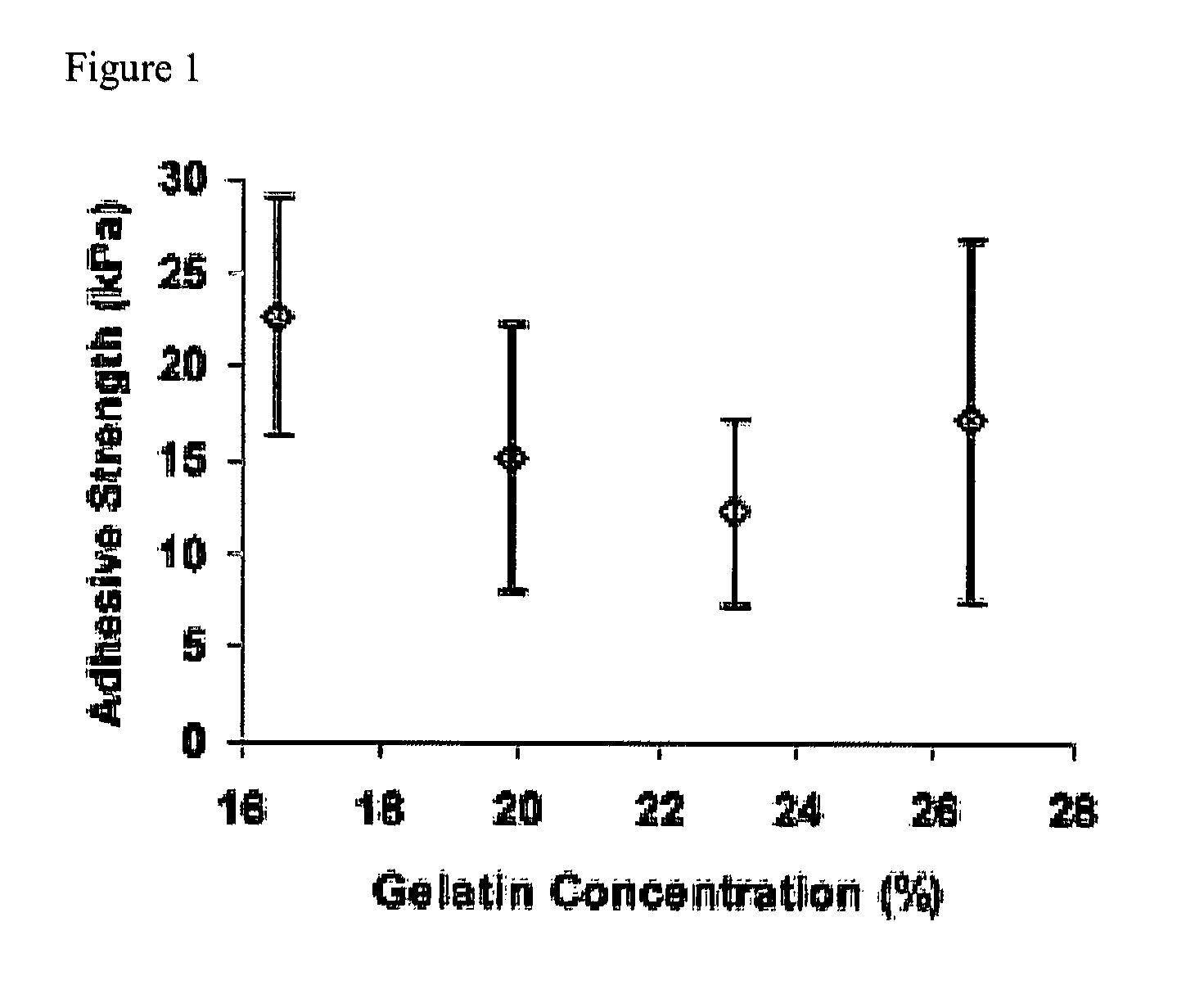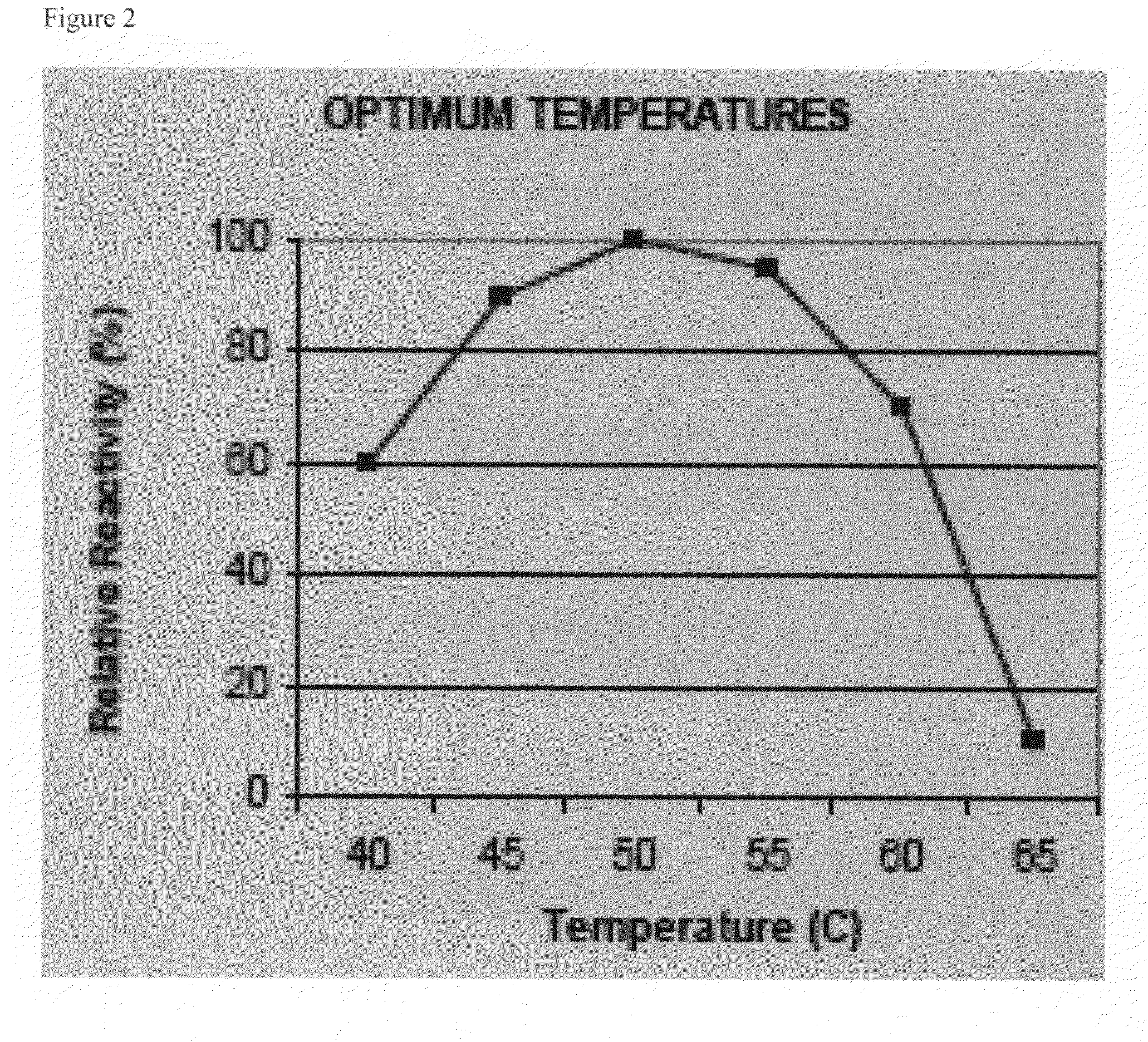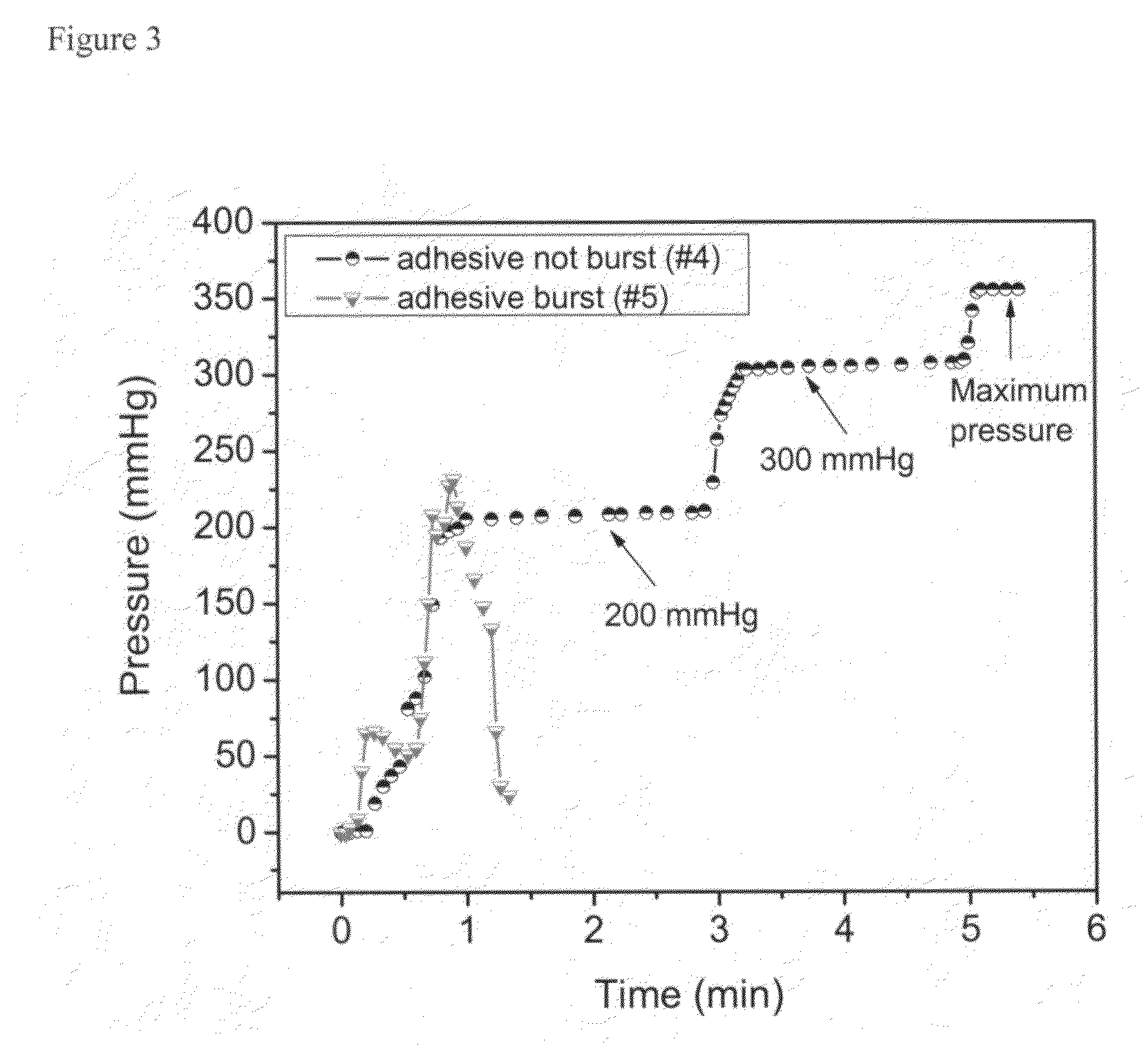Hemostatic materials and dressing
a technology of hemostatic materials and dressings, applied in the field of hemostatic materials, can solve the problems of limited success in the field, method not successfully demonstrated by use of commercially available hemostatic devices, and excessive bleeding or fatal hemorrhage from an accessible site is not uncommon
- Summary
- Abstract
- Description
- Claims
- Application Information
AI Technical Summary
Benefits of technology
Problems solved by technology
Method used
Image
Examples
example 1
Preparation of Illustrative Adhesive
[0098]This Example relates to the preparation of an illustrative, non-limiting adhesive composition according to the present invention. For this Example, calcium independent microbial transglutaminase (Lot No. L-04207, Ajinomoto USA, Chicago, Ill.) was used with a specific activity level of 100 U / gm. Also the tested gelatin was Gelatin type A, 300 Bloom from porcine skin (Sigma-Aldrich, St. Louis, Mo.).
[0099]The following method was used to prepare the illustrative adhesive: 20% w / w gelatin in PBS (phosphate buffered saline; 20 g gelatin into 80 g of PBS) was prepared. Next a 20% w / v mTG solution was prepared in PBS (1 gm mTG into 5 mL PBS). Then, 5 g of gelatin solution was mixed with 0.5 mL of mTG solution (in other words 10:1 ratio).
[0100]FIG. 1 shows the effect of different percentages of gelatin on the adhesive strength of the adhesive. The adhesive strengths were measured by adhering a porcine skin sample to a second such sample, placing a 4...
example 2
In Vitro Burst Pressure Test
[0102]This Example demonstrates the ability of a composition according to the present invention to withstand bursting as a proxy for its ability to withstand high-pressure arterial blood flow. A burst pressure system was developed, as describe below, to mimic high pressure blood flow, with warm PBS used in the place of blood to put pressure on a wound in a porcine skin sample. Withstanding 200 mmHg of pressure for 2 minutes was considered the success criteria as physiological blood pressure is nearly always lower than 200 mmHg. These burst test results demonstrated that compositions according to the present invention are suitable for treatment of blood flow, including high pressure arterial flow.
[0103]Most samples ( 8 / 10) withstood a pressurization of 200 mmHg for 2 minutes. Those that did not pass were likely related to human or system error. The average burst pressure was 320±50 mmHg but this number is conservative since samples that did not burst were ...
example 3
Hemostasis in a Rat Model
[0122]This Example provides an initial in vivo demonstration of a gelatin-mTG composition according to the present invention for achieving hemostasis in a live animal. The rat was an adult female Syrian Rat.
[0123]Materials
[0124]A gelatin solution was used which featured 25% w / w gelatin (porcine, type A, 300 bloom from Sigma-Aldrich (St. Louis, Mo.)) in PBS. The solution was mixed by mixing heated (50° C.) PBS into gelatin powder as it was manually stirred using a spatula. Prior to application, gelatin solution was stored in capped 5 mL syringes submerged in a 50° C. water bath to maintain its liquid form.
[0125]The transglutaminase (mTG) solution featured 20% w / w microbial transglutaminase (Activa WM, Ajinomoto™) in PBS. The mTG solution was maintained at room temperature.
[0126]Prior to application, 1 mL of gelatin solution was added to 0.5 mL of mTG solution in a 2 mL eppendorf tube. The tube was inverted 2-3 times to mix the solutions and then solution was ...
PUM
| Property | Measurement | Unit |
|---|---|---|
| temperature | aaaaa | aaaaa |
| pH | aaaaa | aaaaa |
| pH | aaaaa | aaaaa |
Abstract
Description
Claims
Application Information
 Login to View More
Login to View More - R&D
- Intellectual Property
- Life Sciences
- Materials
- Tech Scout
- Unparalleled Data Quality
- Higher Quality Content
- 60% Fewer Hallucinations
Browse by: Latest US Patents, China's latest patents, Technical Efficacy Thesaurus, Application Domain, Technology Topic, Popular Technical Reports.
© 2025 PatSnap. All rights reserved.Legal|Privacy policy|Modern Slavery Act Transparency Statement|Sitemap|About US| Contact US: help@patsnap.com



